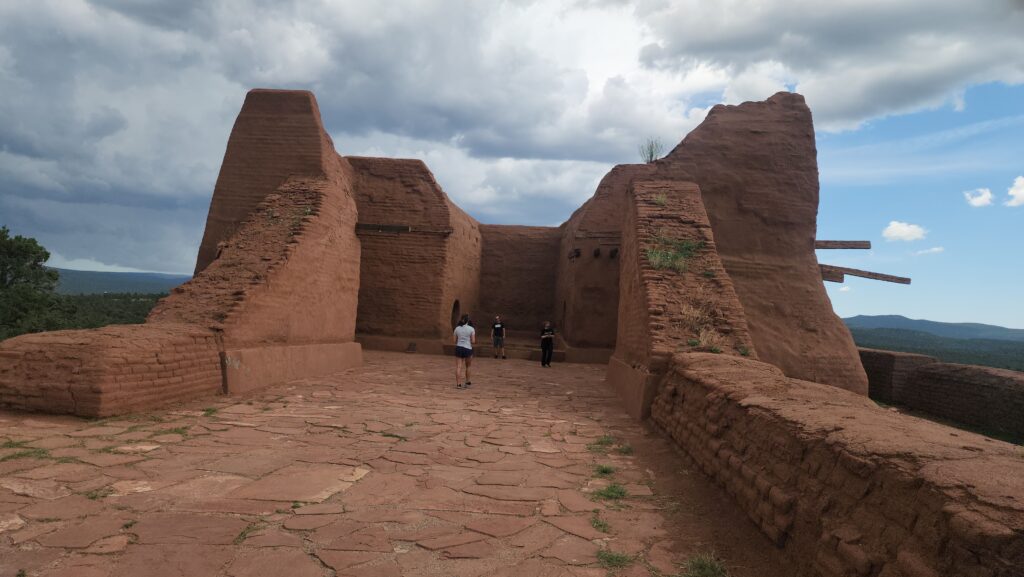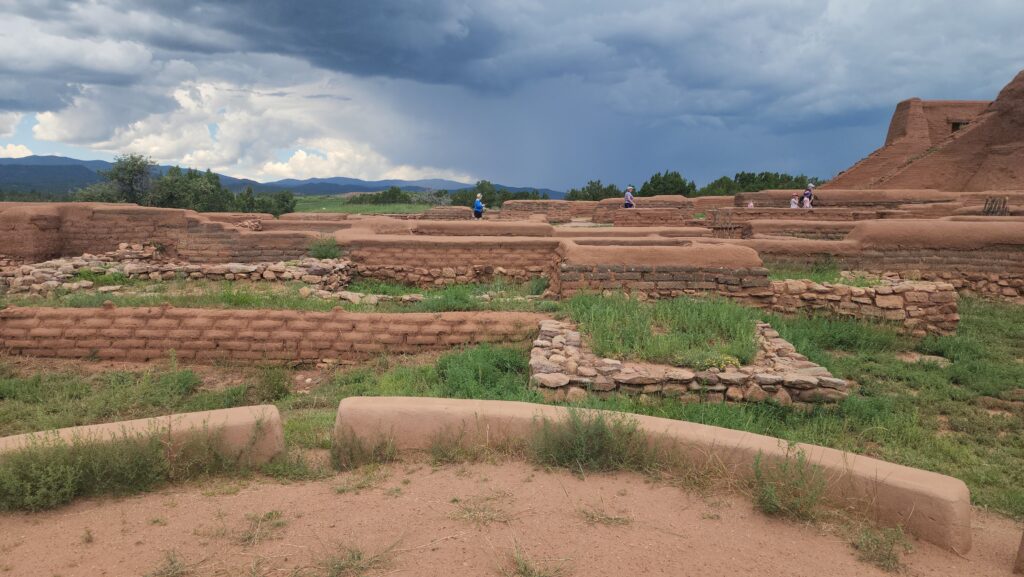
Alright folks, Big Mike’s here, your Route 66 guide, and we’re heading along the Mother Road to Pecos, New Mexico. Remember Bobby Troup sang about gettin’ your kicks on Route 66, and I know a thing or two about this road – I run Route 66 Road Relics in Seligman.

Now, Pecos was a stop on the original Route 66, specifically the Santa Fe Loop, from 1926 to 1937. Route 66 had a few different paths back in the day, and Pecos was on one of those early routes.

But the story of Pecos goes way back, even before cars and highways. Let’s talk about the Pecos Pueblo, the heart of what is now Pecos National Historical Park. In 1540, Spanish explorer Hernando de Alvarado came across this place and called it “Cicuique.” This was a major settlement, with impressive buildings and a substantial population. The people of Pecos were farmers, and they had a well-established community.

The arrival of the Spanish had a significant impact on Pecos. By 1599, they had established a mission, and the influence of Spanish culture and the Catholic religion became a part of the area’s history.
A key feature of Pecos National Historical Park is the Mission Nuestra Señora de los Ángeles de Porciúncula de los Pecos. They built a church here, the first one in 1619. That church was later replaced, but it faced challenges during the Pueblo Revolt in the 1680s. The Pueblo Revolt, a major event in Southwest history, saw the Pueblo people resist Spanish colonial rule. The ruins within Pecos National Historical Park are a powerful reminder of this history.

After the Spanish returned, they built a third church in 1717. The ruins you see today within Pecos National Historical Park are from that church, and you can still see the thick adobe walls, which are a testament to the construction of the time.
Now, let’s head over to Pigeon’s Ranch, also within the boundaries of Pecos National Historical Park. This place is significant for a couple of reasons. First, it was the site of the Battle of Glorieta Pass. This was a crucial battle in the Civil War, and the area around Pigeon’s Ranch, now part of the park, was where much of the fighting took place.

Pigeon’s Ranch also has a Route 66 connection. Route 66, like the Santa Fe Trail before it, was a major route for trade and travel. And Pigeon’s Ranch, within Pecos National Historical Park, served as a stop for those traveling along Route 66.
Route 66 was important for Pecos. It brought travelers and commerce, and it played a role in the area’s development.

Pecos National Historical Park is where you can experience all of this history. You can explore the pueblo ruins, the mission church, and the site of the Civil War battle. It’s a place where the past comes alive, and it’s a great stop for anyone exploring Route 66.

So, take your time, explore Pecos National Historical Park, and let the stories of Pecos sink in. It’s a journey through time.
Route 66 Attractions in Pecos, New Mexico.